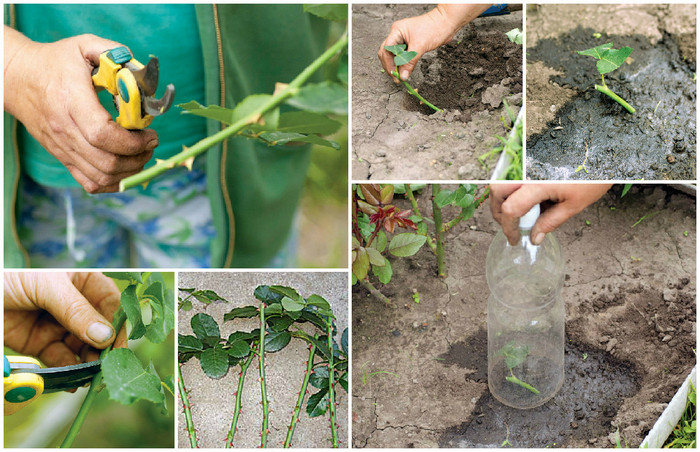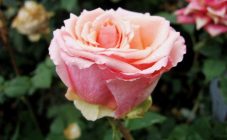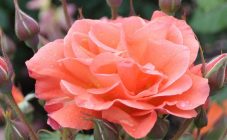Content:
If the rose is called the queen of flowers, then the Schneevitchen rose can be called the Snow Queen for the snow-white color of the petals. There are not so many white roses, there are cream ones, with a greenish or pinkish tint, but there are few pure white roses. Therefore, the Schneevitchen rose is so fond of flower growers all over the world.
It was bred in 1958 in Germany in the Cordes nursery. We crossed two representatives of the Rosaceae family: Hybrid Tea (it has large flowers and almost uninterrupted flowering all season) and Hybrid Musk (a re-flowering shrub with flowers collected in bulky brushes). The name was given to her Schneewittchen rose (Schneewittchen rose). In Australia, the USA and England, this variety is called "Iceberg".
Climbing rose Schneevitchen
Schneewittchen rose (Schneewittchen) - translated from German as "Snow White". Which exactly emphasizes its dazzling white petals.
The description should begin with the fact that this is a variety of roses with large flowers - grandiflora. This rose reaches a height of three to five meters. About one meter wide. Reacts perfectly to the direction of growth.
The shoots are dark green in color, and against the background of shiny light green foliage, large white flowers look simply amazing.
Differs in abundant undulating flowering. The opened flowers keep their shape well for a long time, and even rain is not a hindrance to this. The rose blooms until the frost. And in hot countries and in general all year round.
Its snow-white, with a slight tint of pearls in the middle, flowers shower the entire bush. Flowers, about 6 cm in diameter, are collected in loose brushes of 5-15 pieces, which look very harmonious against the background of glossy foliage.
Rose Schneevitchen is more suitable for flower garden or park decor. All of Central Europe simply cannot imagine decorating their gardens and houses without this beauty. It is also often used for landscaping streets and squares. She is not afraid of frost and unpretentious in care, besides, it blooms for a very long time. In this regard, it, along with lilac and mock-orange, is often used in design.
This rose is used for various purposes:
- creation of hedges;
- decorating gazebos, walls of houses;
- decoration of arches, trapeziums, pergolas and decorative lattices.
Rose Schneevitchen is an excellent ingredient in mixed plantings. Also, this species feels great on a trunk, a meter and a half in height. The crown is formed in the form of a neat ball, and beautiful white "curls" descend from it.
Planting and leaving
This variety of roses is surprisingly unpretentious. He loves fertile, air-permeable soils, but he also feels great on loams and sandy loams. The acidity of the soil prefers slightly acidic or neutral.
The best place is to find a sunny, well-ventilated place. To avoid root rot, groundwater should be no closer than 1 meter, preferably one and a half. The Schneevitchen rose will not grow in the flooded area.
It is necessary to thoroughly approach the choice of seedlings: they should have many thin roots. Attention should also be paid to the root collar: in a two-year-old seedling, it should be in the form of a slight thickening, which separates the wild stock and the cultivated scion.
About a day before planting, the seedling must be prepared. It is necessary to remove all leaves, damaged and immature shoots. The aerial part should be no more than 30-35 cm. Carefully examining the roots, the rotten ones are cut off, and the rest are also shortened to 30 cm. If buds are formed below the grafting site, they must be cut off - these are wilds. For disinfection, the seedling must be dipped in copper sulfate.
Prepare the landing pit. If the soil is not fertile enough, compost or humus with sand is added to it. The pit must be at least half a meter deep. It is necessary to adhere to a distance between landings of at least 3 meters.
The roots are carefully placed in the pit, placing them from top to bottom. The seedlings should be placed so that the grafting is about 10 centimeters below the soil level. Next, the rose seedling is covered with earth, about two-thirds, slightly crushing it with your hand. After that, you need to water thoroughly, wait until all the water is absorbed and fill in the rest of the earth. Spud the planting by 20-30 centimeters and mulch.
To have a beautiful appearance, during the growing season, roses must receive a large amount of water. If there is no rain, then, as soon as the buds appear, the plant must be watered once every one and a half to two weeks. You need a lot of water, at least 1.5-2 buckets per plant.
Top dressing
With such abundant flowering, of course, you cannot do without top dressing. During the entire growing season, every 15-20 days, the plant must be fertilized. Alternating with fertilizers containing nitrogen with a full complex. Fertilizers can be used both as a solution and dry.
In the spring, the rose is first fed with full mineral fertilizer. In a couple of weeks, organic matter (infusion of mullein and ash) will be required - it is still bred and watered at the root. Thus, alternating, feeding is done until July. Then nitrogenous fertilizers are removed, and phosphorus and potassium are introduced. Thanks to them, the bush will begin to prepare for winter.
Pruning
In the climbing rose Schneevitchen, shoots grow by more than 2.5 meters per season. They are sheltered for the winter. Pruning shoots that are rotten or frozen. In the fifth year, the flowering of Rose Schneevitchen weakens, therefore at this time it is necessary to remove the main shoot.
Shelter for the winter
On warm days of late autumn, you need to start laying Schneevitchen for winter rest. If the shoots are very stiff, then they will have to be laid in several stages. First, tilt as much as possible and fix. After a few days, the procedure is repeated, and so on, until the desired result is achieved.
- When laying shoots, it is imperative to spread dry grass, fallen leaves, spruce branches under them.
- After that, it must be covered with a non-woven covering material, and then with a film.
Reproduction of climbing roses
The Schneevitchen rose is propagated by cuttings, both summer and winter. Best of all is green cuttings.
It is more advisable to take cuttings in spring flowering. It is necessary to cut the cuttings with a couple of internodes. The lower end is cut at an angle of 45about, the top is left straight away from the kidney.
The stalk must be placed in a mixture of earth and sand or directly into the soil, it must be covered with a film or glass container on top, and shaded from the sun. Watering is carried out without removing the shelter. Next, land is carried out as described above.
Advantages and disadvantages of the variety
The advantages, of course, include:
- high decorativeness;
- large-floweredness;
- unpretentiousness;
- flowering duration.
There are not so many disadvantages:
- low frost resistance;
- almost complete absence of aroma.
Schneevitchen roses will bring a real fairy tale to any garden. Landscaping designed taking into account the vertical plantings of these roses will make the site cute and romantic. You can invite friends to such an unusual paradise and spend warm summer evenings with them. Surrounded by beautiful white roses, everyone will have a great mood.


















And who to believe? There is no uniform information on this rose, who writes what he wants. In one article, the height is 1-1.5, the winter hardiness is excellent! In your article, the opposite is true!